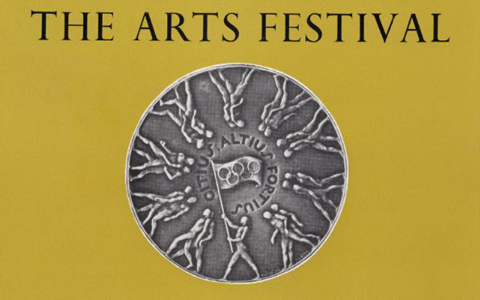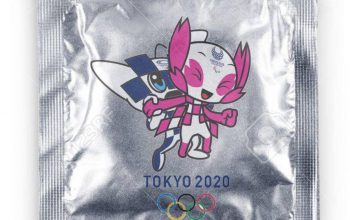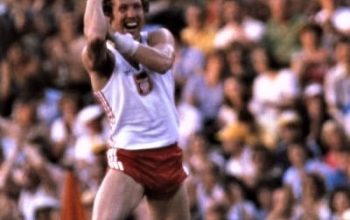The Olympic Games are more than about sport, according to former boss of the International Olympic Committee (IOC), Avery Brundage: “Originally, in the ancient Games, there was but one athletic event. The Games were primarily a religious festival to pay homage to the gods. It was the fine arts that were emphasized; there were odes to be composed, epics to be recited, dramas to be performed, sculpture to be viewed, and music to be heard. Last of all, there was the single race in the stadium, in which grace and beauty were as much esteemed as speed and strength.”
In Ancient Greece, art and sport were seen as perfect partners. It was about harmony between muscle and mind.
Beginning at Stockholm in 1912, the Olympics included an arts competition. Medals were awarded in five categories: architecture, literature, music, painting, and sculpture, referred to as the ‘Pentathlon of the Muses’.
Over the years architects designed swimming pools, sporting facilities and stadiums; artists painted wrestlers, swimmers and runners; and writers and poets waxed lyrical about lithe bodies and the noble pursuit of victory.
In the first competition, held in Stockholm, and the gold medal for literature was shared by Martin Eschbach and Georges Hohrod. It is hard to see what the judges saw in this somewhat overwrought and ecstatic tribute to the ancient games, called Ode to Sport.
O Sport, pleasure of the Gods,
essence of life, you appeared suddenly
in the midst of the grey clearing
which writhes with the drudgery of
modern existence, like the radiant
messenger of a past age, when
mankind still smiled. And the glimmer
of dawn lit up the mountain tops and
flecks of light dotted the ground in the
gloomy forests.
Jean Jacoby’s paintings won gold at the 1928 Olympic Art Competitions in Amsterdam
In 1919, the IOC was severely embarrassed when Professor Norbert Müller of University of Kaiserslautern in Germany noticed that the names of the two authors coincided with two villages on the French-German border, neighbouring Luttenbach, which is where Baron De Coubertin’s wife was born and Müller concluded that the winner was not two amateur poets by none other than the founder of the modern Olympic movement.
Unlike De Coubertin, who at least understood that his entry needed to be disguised, Avery Brundage, at the time IOC’s vice president, had no such qualms. At the 1932 Olympic Games he received an honourable mention in the literature category for his article, The Significance of Amateur Sport.
From its earliest days the Cultural Olympiad was mired in mediocrity, largely due to IOC rules that limited entries to amateurs. And while poets, writers and artists were might be subsisting on baked beans and rotgut whiskey in their garrets, they tried hard to sell their works, to survive. As a result, the competition lacked credibility because it attracted dedicated hobbyists.
By 1950, Helsinki took the unilateral decision and did not to include the Cultural Olympiad in its program.
In 1954, at its meeting in Athens, the OIC decided to end the cultural competition, and in its place allow host cities to organise exhibitions in which professional artists and writers could participate.
Melbourne enthusiastically embraced the idea of including a cultural program. It provided an opportunity to showcase Australian plays, literature, music, ballets and art.



